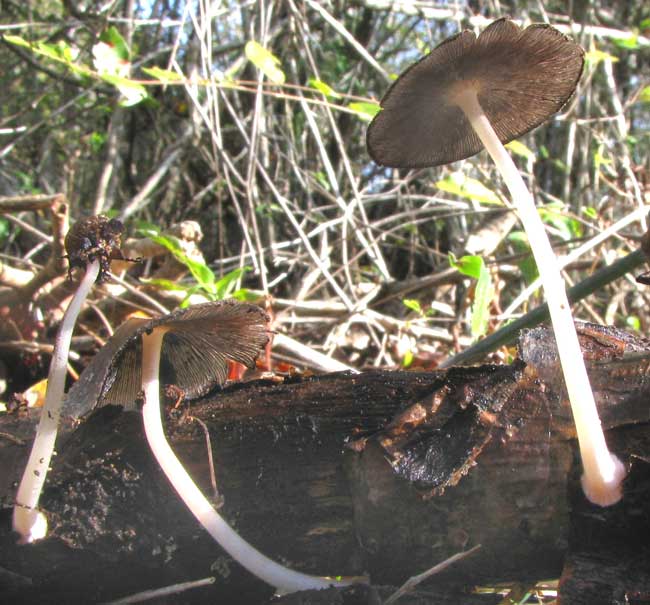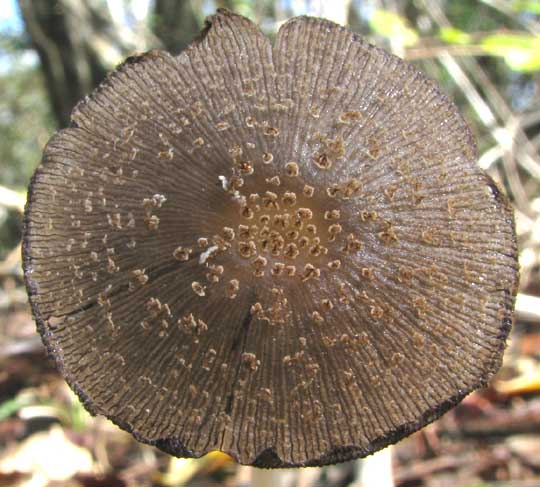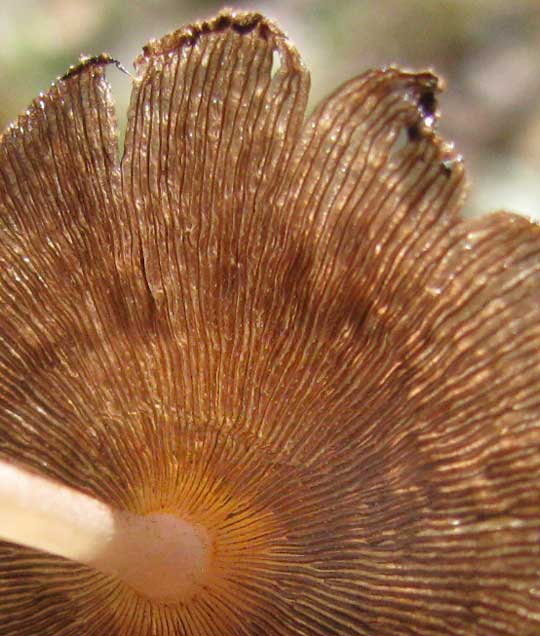Excerpts from Jim Conrad's
Naturalist Newsletter

from the February 20, 2011 Newsletter issued from Hacienda Chichen Resort beside Chichén Itzá Ruins, central Yucatán, MÉXICO; limestone bedrock, elevation ~39m (~128ft), ~N20.676°, ~W88.569°
INKY-CAP ON A TWIG
Though parts of humid Mexico are mushroom wonderlands, the Yucatán is relatively mushroom impoverished. Surely it has to do with the severe, six-month-long dry season we have, and the thin, organic-matter-poor soil. Here in the heart of the dry season, mushrooms are particularly rare.
So, the other day I was especially glad to see three little parasols arising from the downed branch shown at the top of this page.
They were only about two inches tall (5cm), and I suspect that they are emerging now because last week we received over an inch (±3cm) of rain -- very unusual for February in the Yucatán. Fungal mycelium must have been lying dormant inside the dry, fallen tree branch so when the rain came the mycelium went into action forming fruiting bodies -- which is what mushrooms are.
No guide to the mushrooms of the Yucatán exists so usually when you find a fungus you can't identify it. The ones on the twig, however, I could see at first glance, belonged to the inky-cap group of species.
Notice the dark fringe on the brown cap at the right. That cap has begun to melt along its edges -- to "deliquesce." The middle cap has progressed a bit further, starting to droop and get raggedy, and the cap at the left has practically collapsed into a formless blob atop its more resilient white stalk. That's what inky-caps do. They're fragile mushrooms whose caps melt soon after forming. The inky fluid that results bears millions of spores, and smears easily onto whatever passes by, including insect legs that carry the spores to germinate far away.
On the Internet I can't find pictures matching these. I'm guessing it's the genus Coprinopsis, but who knows?
Somehow the name isn't too important, especially after I got to study and admire the cap's top, suggesting some kind of celestial explosion or genesis, shown below:

Beneath the cap I discovered the lovely radiation seen below:
